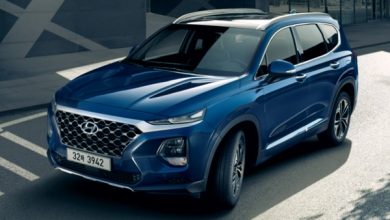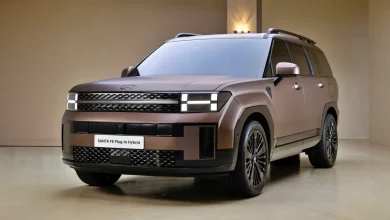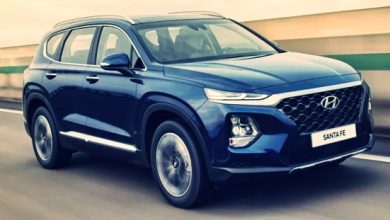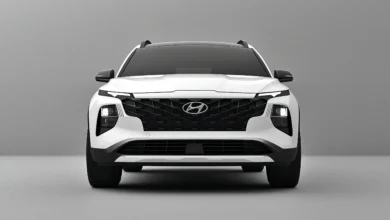2026 Hyundai Santa Fe Prime: Is Hyundai Planning a Plug-In Flagship?
2026 Hyundai Santa Fe Prime
Hyundai’s radically redesigned Santa Fe landed with the subtlety of a dropped shipping container – all bold lines, H-shaped lighting, and a newfound focus on lifestyle utility.
But in the rapidly electrifying automotive landscape, there’s a notable gap in its armor: a plug-in hybrid option.
Could a hypothetical “2026 Hyundai Santa Fe Prime” be the missing piece, blending the SUV’s adventurous spirit with a meaningful electric range? We’re diving into the speculation.

Let’s be clear: As of early 2025, Hyundai hasn’t officially announced a “Santa Fe Prime.” But automotive product cycles march on, and the industry’s trajectory towards electrification, coupled with Hyundai’s own established PHEV technology (seen in the Tucson and the outgoing Santa Fe generation), makes a plug-in variant of the new, larger Santa Fe feel less like a “what if” and more like a “when.” The “Prime” moniker, often used by rivals like Toyota to denote their plug-in offerings, seems a plausible fit for Hyundai’s potential range-topper.
So, what could we expect from this theoretical 2026 Hyundai Santa Fe Prime?
Building on a Boxy Foundation
The current-generation Santa Fe (launched in 2024) threw Hyundai’s previous design language out the window, embracing a distinctive, almost Land Rover-esque aesthetic.
It’s upright, unapologetically boxy, and maximized for interior volume. A hypothetical “Prime” version would likely retain this core structure.
We’d anticipate subtle differentiators signaling its electrified heart. Perhaps a unique closed-off section within the grille (or a distinct grille pattern altogether), specific aerodynamic wheel designs aimed at maximizing efficiency, discreet “Prime” or “PHEV” badging, and maybe even exclusive paint options or lighting signatures.
The charge port door, likely integrated neatly into a front or rear fender, would be the most obvious giveaway.
Interior: More Tech, More Comfort, More Questions?
Inside, the current Santa Fe already impresses with its panoramic curved display integrating the digital instrument cluster and infotainment screen, generous use of sustainable materials, and clever storage solutions.
The longer wheelbase compared to its predecessor translates directly into more passenger room, particularly in the newly standard third row.
A 2026 Santa Fe Prime would likely occupy the upper echelons of the trim hierarchy. Expect premium materials like Nappa leather upholstery, perhaps unique wood or metallic trim finishes, an upgraded Bose or Harman Kardon sound system, and potentially enhanced ambient lighting themes.
By 2026, we might also see advancements in Hyundai’s infotainment system – perhaps larger screen real estate, improved voice command responsiveness, and even more sophisticated integration with connected services. Over-the-air (OTA) updates for more vehicle systems would be a must.
The big question mark, as with any PHEV conversion, is the packaging. Where does the battery go? Typically, it resides under the floor.
While Santa Fe’s new platform was likely designed with electrification in mind, engineers still face the challenge of integrating a sizeable battery pack (necessary for a competitive electric range) without unduly compromising passenger or cargo space.
Could the third row become slightly less accommodating? Might underfloor storage be reduced? These are crucial considerations for a family-focused SUV. We’d hope Hyundai could minimize intrusion, preserving the Santa Fe’s newfound practicality.
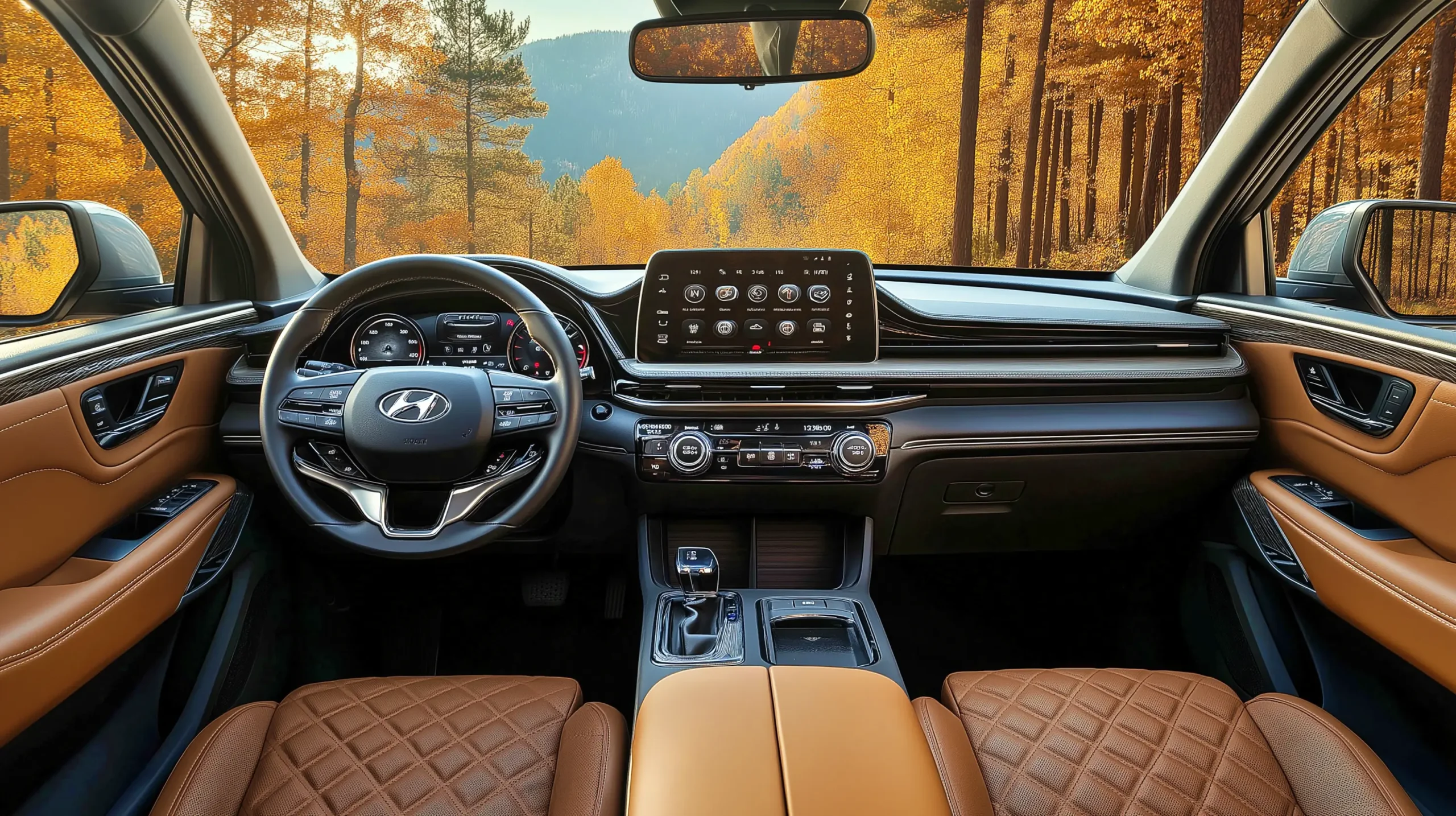
The Powertrain: The Plug-in Promise
This is the core of the “Prime” concept. We expect Hyundai would leverage its existing, proven plug-in hybrid technology, likely an evolution of the system found in the Kia Sorento PHEV (its corporate cousin) and the previous Santa Fe PHEV.
This typically involves pairing a small-displacement turbocharged gasoline engine (like Hyundai’s 1.6-liter turbo four-cylinder) with a more potent electric motor and a larger lithium-ion battery pack compared to the standard hybrid.
Power would likely be routed through an automatic transmission (perhaps a 6-speed, though an 8-speed would be welcome) to a standard all-wheel-drive system (critical for an SUV aiming for broad appeal).
What kind of performance and range could we anticipate?
- Horsepower: Combined output would need to surpass the current Santa Fe Hybrid’s 232 horsepower. Aiming for the 260-280 hp range seems plausible, offering a noticeable step up in performance and effortless merging capabilities.
- Electric Range: This is key. The outgoing Santa Fe PHEV offered around 31 miles of EPA-estimated electric range. For a 2026 model facing competitors potentially pushing towards 40+ miles (like the Mazda CX-90 PHEV’s 26 miles, which feels low, or future rivals), Hyundai would need to target at least 35-40 miles of real-world electric range to be truly compelling. This would cover the daily commute for a significant number of drivers.
- Efficiency: Expect impressive MPGe figures when running on battery power and solid MPG numbers when operating as a conventional hybrid. The goal is flexibility – silent, zero-emission driving for short trips, and efficient long-haul cruising without range anxiety.
- Charging: Level 2 (240V) charging capability would be standard, allowing for a full recharge overnight or in a few hours. DC fast charging is typically absent on PHEVs, and we wouldn’t expect it here.
Driving Dynamics: Smooth Operator?
The current Santa Fe offers a competent, comfortable, and quiet ride, albeit without setting pulses racing. A PHEV variant could enhance this.
Driving in pure EV mode promises near-silent operation and the smooth, instant torque delivery characteristic of electric motors. This refinement would be a major selling point.
The transition between electric and gasoline power is an area where refinement is crucial. Hyundai’s systems have generally been good, but we’d hope for further improvements by 2026, making the switch nearly imperceptible.
The added weight of the battery pack would need careful suspension tuning to maintain ride comfort and control body motions.
Could Hyundai offer adaptive dampers on a top-tier Prime trim? It’s possible, to further enhance its premium positioning.
Regenerative braking will be part of the equation, hopefully with adjustable levels to suit driver preference, allowing for efficient energy recovery.
Safety and The Competition
Hyundai’s SmartSense suite of driver-assistance features is comprehensive, and we’d expect the 2026 Santa Fe Prime to feature the latest iteration, potentially including more advanced Highway Driving Assist capabilities.
The competitive landscape for three-row plug-in hybrid SUVs is growing. The Santa Fe Prime would square off against:
- Kia Sorento PHEV: Its closest relative, offering similar tech but different styling and potentially slightly different packaging.
- Mazda CX-90 PHEV: Offers a more premium feel and engaging driving dynamics but currently has a less impressive electric range.
- Toyota Grand Highlander: While currently offering potent standard hybrids (Hybrid Max), a future PHEV variant (“Prime”?) is conceivable and would be a major competitor.
- Mitsubishi Outlander PHEV: A segment stalwart known for its standard third row and decent EV range, though perhaps less refined overall.
Pricing would be crucial. PHEVs command a premium over standard hybrids and gasoline models due to the larger battery and added complexity.
A hypothetical 2026 Santa Fe Prime would likely sit at the top of the lineup, potentially starting in the low-to-mid $50,000 range, depending on features and final specifications.
A 2026 Hyundai Santa Fe Prime, particularly one delivering around 40 miles of electric range, feels like a logical and necessary addition to the lineup.
It would combine the standard model’s bold design, spacious interior, and family-friendly features with the significant benefits of plug-in hybrid technology: silent EV commuting, reduced fuel consumption, and potentially potent performance.
If Hyundai can successfully integrate the PHEV powertrain without major compromises to interior space, refine the interplay between gas and electric propulsion, and price it competitively, the Santa Fe Prime could become a highly desirable option for families looking to embrace electrification without going fully electric just yet.
It represents a potential sweet spot, plugging a crucial gap and making the already interesting Santa Fe even more compelling. We’ll be watching closely to see if this speculation becomes reality.
Release Date and Pricing
There is no official release date for a 2026 Hyundai Santa Fe Prime because the vehicle has not been confirmed by the manufacturer.
If Hyundai does decide to introduce such a model (likely a Plug-in Hybrid variant) for the 2026 model year, announcements would typically happen sometime in 2025, with a potential release date in late 2025 or early-to-mid 2026, based on common industry timelines. However, this remains speculation until Hyundai makes an official statement.
Since the vehicle isn’t confirmed, there is no official price for a 2026 Hyundai Santa Fe Prime. If it were introduced as a top-tier Plug-in Hybrid model, based on current market trends and the pricing of existing Hyundai PHEVs and competitors:
-
- It would almost certainly be priced above the current gasoline and standard hybrid Santa Fe models.
- Speculatively, pricing could potentially start in the low-to-mid $50,000 range (USD), depending heavily on the final specifications, battery size, included features, and market conditions at the time of release.
Keep an eye on official announcements from Hyundai for any confirmed information regarding future Santa Fe variants, including potential release dates and pricing.

